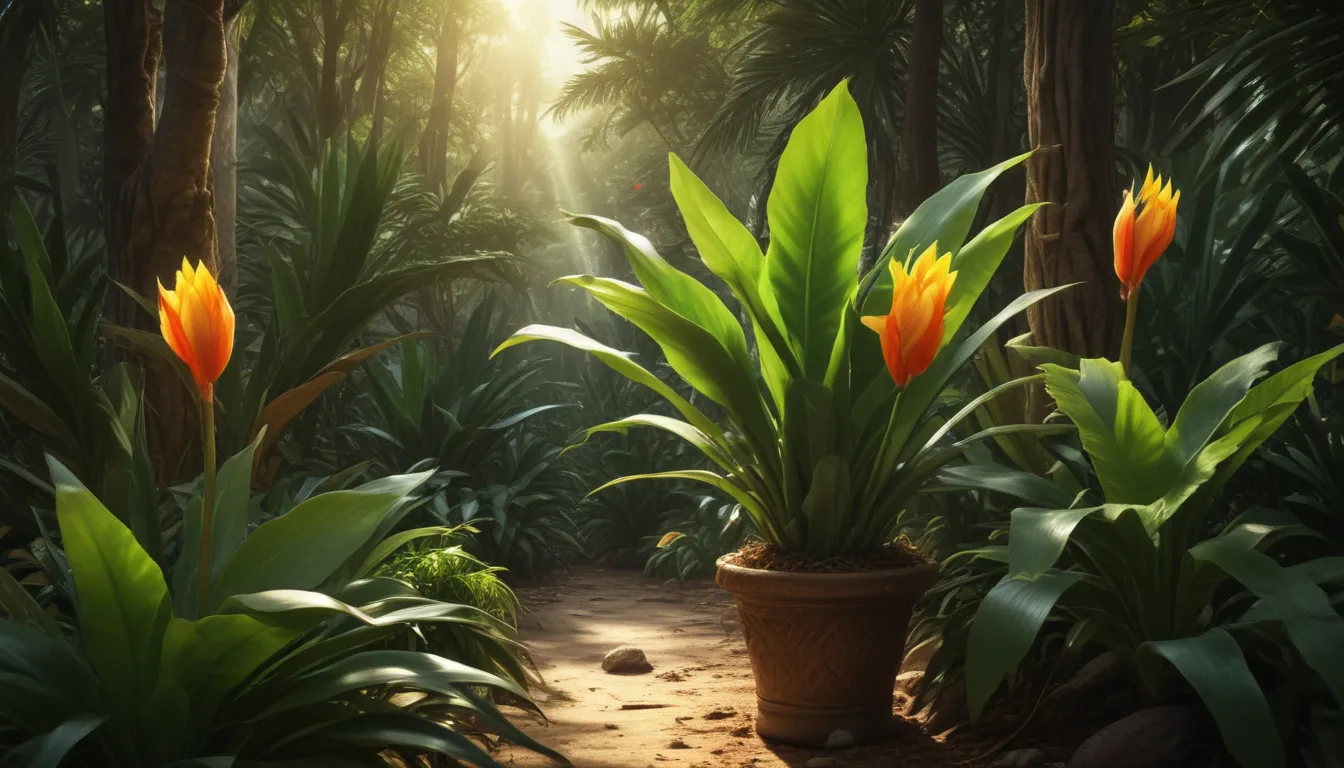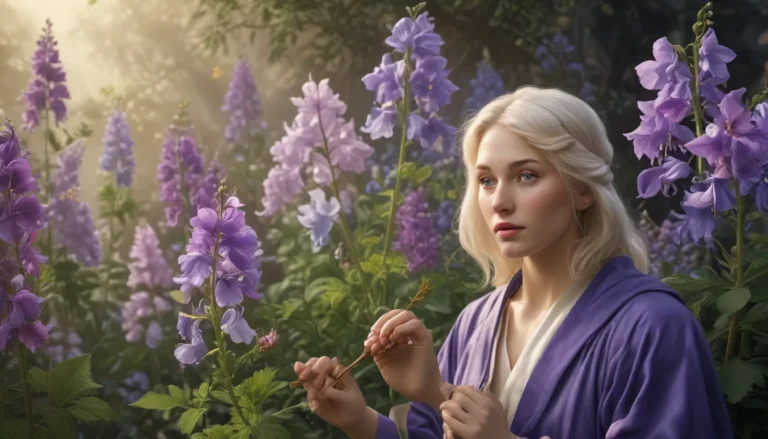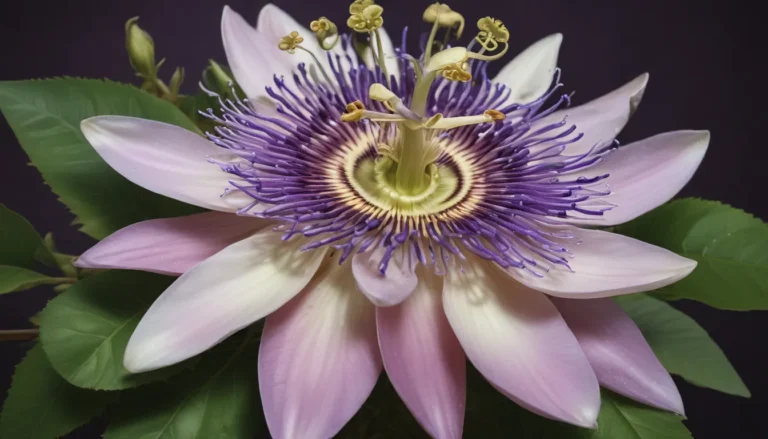The pictures we use in our articles might not show exactly what the words say. We choose these pictures to make you interested in reading more. The pictures work together with the words but don’t take their place. The words still tell you the important facts.
In the vast world of plants, there are countless species that captivate us with their unique traits and beauty. One such plant that often goes unnoticed is the aspidistra. While it may not be as popular as roses or sunflowers, the aspidistra holds a treasure trove of surprising facts that are sure to spark your curiosity. From its remarkable resilience and ability to thrive in low-light environments to its symbolic significance in literature and art, the aspidistra is truly a plant worth exploring. Join us as we uncover 17 surprising facts about this extraordinary plant, shedding light on its hidden wonders that deserve a closer look.
Key Takeaways:
- Aspidistras, also known as Cast Iron Plants, are resilient, low-maintenance, and air-purifying. They symbolize endurance and are perfect for beginners and office spaces.
- With origins in East Asia, Aspidistras have a rich history, cultural significance, and can live for decades. They bring luck, add symbolism to art, and are deer-resistant.
The Enchanting Origins of Aspidistra
Aspidistra plants trace their roots back to the lush forests of East Asia, including countries like China, Japan, and Taiwan. Thriving in shaded and moist environments, these plants have adapted to the quiet elegance of the forest floor.
The Resilient Cast Iron Plant
Aptly nicknamed the Cast Iron Plant, aspidistras have gained this moniker for their exceptional hardiness. These plants can endure a wide range of conditions, from low light to neglect and fluctuating temperatures, making them an ideal choice for those seeking a low-maintenance indoor companion.
Victorian Elegance and Dignity
In the 19th century, aspidistras became a symbol of refinement and dignity during the Victorian era. Their presence in homes and gardens added an air of sophistication, becoming a beloved decorative plant in many households.
The Allure of Aspidistra Leaves
One of the most striking features of aspidistra plants is their long, lance-shaped leaves. Dark green with a glossy sheen, these leaves grow upright and can reach impressive lengths of up to 2 feet, adding a touch of visual appeal to the plant.
Air-Purifying Prowess
Aspidistras are not only aesthetically pleasing but also beneficial for air quality. These plants have been found to effectively purify the air by removing toxins such as formaldehyde and benzene, making them a valuable addition to indoor spaces with poor ventilation.
Unveiling the Hidden Flowers
While the leaves of the aspidistra steal the spotlight, the flowers of this plant are small and often inconspicuous. Typically brown or maroon in color, these flowers grow close to the ground, complementing the plant's foliage-centric visual appeal.
The Sweet Scent of Aspidistra Flowers
Despite their understated appearance, the flowers of the aspidistra emit a delicate, sweet fragrance when they bloom. Adding an element of subtlety to the plant's overall presence, these fragrant blossoms are a delightful surprise.
Adaptability at its Finest
Aspidistras are renowned for their adaptability to various growing conditions, thriving both indoors and outdoors with the right care. With a preference for shade and regular watering, these plants can flourish in diverse environments.
A Beginner’s Best Friend
For novice gardeners, aspidistras are an excellent choice. Their resilience and low-maintenance nature make them the perfect plant for beginners, as they can tolerate neglect and do not require specialized care.
The Gift of Longevity
With proper care, aspidistra plants can live for several decades, making them a long-term investment for plant enthusiasts. Some specimens have been known to survive for up to 50 years, serving as a steadfast reminder of resilience and endurance.
Bringing Luck and Prosperity
In many cultures, aspidistras are believed to bring good luck and prosperity. These plants are often associated with positive energy and financial well-being, making them a popular gift for new beginnings and ventures.
A Touch of Tranquility in Office Spaces
Thanks to their ability to thrive in low-light conditions, aspidistras have become a popular choice for office environments. Adding a touch of greenery and tranquility, these plants bring a sense of nature to sterile workspaces, creating a more inviting atmosphere.
A Symbol of Endurance and Perseverance
Aspidistras are revered for their ability to thrive in challenging conditions, symbolizing resilience and endurance. Through their tenacity, these plants serve as a powerful reminder that beauty can flourish even in the harshest environments.
From Literature to Art
Aspidistras have left their mark on literature and art, symbolizing themes of resilience, endurance, and the interplay between beauty and simplicity. Their presence in creative works adds depth and symbolism, enriching the interpretation of these artistic expressions.
Nature’s Defense Mechanism: Deer-Resistance
Due to their tough and unappetizing leaves, aspidistras are not attractive to deer and rabbits, making them an excellent choice for gardens in areas prone to wildlife damage. Their natural defense mechanism ensures they remain unharmed in the presence of these animals.
Propagating Aspidistras Through Rhizome Division
For those looking to propagate their aspidistra plants, rhizome division is a simple and effective method. By separating the plant into smaller sections and replanting them in separate pots, you can expand your collection of these resilient plants with ease.
Cultural Significance in Japan
In Japan, the aspidistra holds cultural significance, known as "Tora no O" or "Tiger's Tail." Associated with the goddess of weaving, these plants were utilized as weaving materials, embodying themes of endurance and strength.
Conclusion: Embracing the Enigmatic Aspidistra
Aspidistra, the cast iron plant, stands as a testament to nature's resilience and beauty. With its unique characteristics and historical significance, this remarkable plant continues to captivate plant enthusiasts worldwide. From its origins in East Asia to its enduring symbolism in various cultures, the aspidistra offers a wealth of intriguing facts waiting to be discovered. By delving into the captivating world of this versatile plant, we unveil the hidden wonders that make the aspidistra a truly remarkable botanical marvel.
FAQs
- How often should I water my Aspidistra plant?
-
Aspidistra plants prefer slightly moist soil but can tolerate periods of drought. Water your plant when the top inch of soil feels dry, usually about once every 7-10 days.
-
Can I keep my Aspidistra plant in direct sunlight?
-
No, Aspidistra plants prefer low light or shady conditions. Direct sunlight can scorch their leaves and cause damage.
-
What is the best temperature range for Aspidistra plants?
-
Aspidistra plants tolerate a wide range of temperatures, but they prefer temperatures between 60°F (15°C) and 75°F (24°C). Avoid drastic temperature fluctuations.
-
Does Aspidistra require any special care or maintenance?
-
Aspidistra plants are low-maintenance and require minimal care. Regular watering, occasional fertilization, and cleaning the leaves to remove dust are usually sufficient to keep them healthy.
-
Can I grow Aspidistra outdoors?
- Aspidistra is typically grown as a houseplant but can be grown outdoors in USDA hardiness zones 7-11. Ensure it is planted in a shaded location with well-draining soil.
Unveiling the hidden wonders of the aspidistra plant reveals a world of resilience, beauty, and cultural significance. From its origins in East Asia to its enduring symbolism in literature and art, this remarkable plant continues to enchant and inspire. Dive into the intriguing world of the aspidistra and uncover the captivating secrets that make it a true botanical gem.






